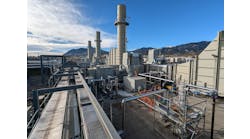While the recession officially ended in June 2009, recovery in the construction industry has been more gradual than the rate of expansion in the general economy. To offset soft domestic markets, many electrical design firms expanded their key areas of expertise beyond design, including construction and energy management, and also extended their reach beyond the country’s borders. In addition, they became literate in building information modeling (BIM) software and certification requirements for green buildings.
As a result, in answer to a proprietary EC&M survey, the companies on EC&M’s 2011 Top 40 Design Firms list reported $16.9 billion in overall design services revenue in 2010 (click here to see Top 40 Design Firms). Of the 28 firms present on last year’s list, 17 suffered year-over-year decreases in overall design revenue, 10 experienced an increase in annual revenue, and one marked no change. Twelve firms are new or have returned to the Top 40 this year.
Only four firms — Irving, Texas-based Fluor Corp. (No. 2) with -23.6%, Muscatine, Iowa-based Stanley Consultants (No. 13) with -23.9%, Denver-based Zachry Engineering Corp. (No. 14) with -36.9%, and Walnut Creek, Calif.-based Carollo Engineers, Inc. (No. 18) with -37% — disclosed double-digit declines. Five firms — New York-based Parsons Brinckerhoff (No. 4) with 14.5%, Omaha, Neb.-based HDR (No. 5) with an astounding 423.7%, Edmonton, Canada-based Stantec, Inc. (No. 6) with 10.5%, New York-based STV (No. 11) with 15.6%, and Albany, N.Y.-based CHA (No. 17) with 12.2% — reported year-over-year jumps in revenue of 10% or more. Year-over-year overall design revenue totals for the 28 firms averaged an 11.1% increase for 2010.
Additionally, 27 firms reported $553.9 million in total electrical design services revenue for 2010 (click here to see Top Electrical Design Firms). The 17 firms reporting electrical design services revenue for both 2009 and 2010 show an average year-over-year increase in total revenue related to electrical design work of 4.4%. Carollo Engineers, Inc. dropped one spot on the electrical list (from No. 7 to No. 8) with a 46.4% year-over-year decrease in revenue based on electrical design services. Yet, KCI Technologies, Inc. rose from No. 25 to No. 16 on the electrical list with an increase of 109.5% in total electrical design services revenue in 2010. Five firms that appear on the Top Electrical Design Firms list do not appear on the Top 40 Design Firms list, including FBA Engineering, Newport Beach, Calif.; IBE Consulting Engineers, Sherman Oaks, Calif.; Spectrum Engineers, Salt Lake City; The Engineering Enterprise, Alameda, Calif.; and Theka Associates, Inc., Muskegon, Mich.
Signs of recovery
The EC&M survey asked several questions concerning business climate and revenue expectations in 2010 and 2011. Overall, the Top 40 design firms reported seeing signs of a slightly improved economy, yet revealed caution in their answers to questions about the time line of the recovery. Of the 39 firms that answered the question asking them to describe the business climate in 2010, two-thirds characterized it as “fair” (Fig. 1). Although 45% of the firms said they met revenue expectations for 2010, almost as many — 37.5% — revealed they did not meet revenue expectations (Fig. 2). Of the 38 firms that provided a revenue forecast for 2011, only three are expecting a decrease in revenue. Yet, only four are predicting an increase of more than 10% (click here to see Fig. 3). Almost half the firms on the Top 40 list don’t expect growth in the construction industry until 2012 (click here to see Fig. 4).
On the question about changes to their backlog in 2010, the firms were closely split. Nineteen reported an increase in backlog for 2010, whereas 17 revealed their backlog decreased (Fig. 5). However, of the 37 firms that reported on an expected change in backlog for 2011, 91.9% are predicting an increase (Fig. 6). As an example, Fluor Corp. recently posted a backlog increase of $2.3 billion for the first quarter of 2011 and an increase of $11.5 billion from a year ago, reaching a company record of $37.2 billion. New project awards for the first quarter of 2011 were $6.2 billion, nearly doubling the $3.4 billion in new awards booked a year ago. The quarter included $3.9 billion of awards in industrial and infrastructure, $966 million in oil and gas, $882 million in government, and $422 million in global services. “We continue to track a very healthy prospect list and believe that new awards will remain robust throughout 2011,” says David Seaton, Fluor’s CEO.
Seventeen firms reported adding employees in 2010 — mostly through acquisition (Fig. 7). In 2010, Stantec added 1,400 new staff to the company through the acquisition of 10 firms, including Project Control Group, Inc.; TetrES Consultants, Inc.; IEA Holdings, Inc; WilsonMiller, Inc.; Natural Resources Consulting, Inc.; Communication Arts, Inc.; Anshen & Allen Architecture, Inc.; ECO:LOGIC Engineering; Street Smarts, Inc.; and Burt Hill, Inc., which will all be rebranded under the Stantec name.
Nonetheless, as a testament to the uncertainty of projects in 2010, almost as many firms laid off employees. In fact, several laid off and added employees in the same year. Still, as a result of the growing backlogs in 2011, most firms have hired or are planning on hiring additional employees in 2011 (Fig. 8). With an eye to the future, Folsom, Calif.-based Glumac (No. 29) opened a storefront office in Corvallis, Ore., across from Oregon State University’s School of Engineering. The location, Glumac’s ninth office, will serve as a proving ground for engineering students, as well as a potential launch pad for other West Coast locations for the company.
Steven Straus, Glumac’s Portland-based president, cites a report by the United Nations Educational, Scientific and Cultural Organization that points out that climate change, economic troubles, and third-world development contribute to a growing need for engineers, even while the supply is diminishing. By 2015, there will be a 50% deficiency in new engineering talent. For Glumac, which Straus says is hiring, such shortages are a threat to the bottom line.
Testing international waters
More Top 40 firms reported opening one or more branch offices than closing them in 2010. However, the circumstance leading to either action was more than likely caused by acquisition — a definite trend among the top players in 2010 that is expected to continue throughout 2011 (Fig. 9). Through acquisition, firms gained greater reach both geographically and in areas of expertise. Twenty-four firms reported performing work in design/build, 15 were involved in project/construction management, and 13 were in energy management (Table 1).
Parsons Brinckerhoff (PB), which celebrated its first year as a wholly owned subsidiary of Balfour Beatty, announced in October 2010 that the Halsall Group, comprising Halsall Associates, Pivotal Projects, and Loop Initiatives, had become the Canadian Operating Company of PB, a 14,000-person global professional services firm specializing in infrastructure planning, design, and program/construction management. “The joining of Halsall’s strength in buildings with PB’s strength in transportation infrastructure allows us both to provide enhanced services to existing clients as well as new clients throughout Canada,” says George J. Pierson, president and CEO of PB.
Although only three firms reported outsourcing electrical design work to companies outside the United States in 2010 or planning to outsource electrical design work in 2011, many companies worked in conjunction with their own international offices. Glumac employs 200 staff members in its nine offices located throughout California and in Seattle, Portland, Ore., and Las Vegas. Recently, the company has been doing more work in China, where it is looking into opening an additional office.
Englewood, Colo.-based CH2M Hill (No. 1) boasts offices in several parts of the world, including Canada, Russia, United Arab Emirates, China, Mexico, Argentina, Singapore, and the United Kingdom. The decision to outsource to a CH2M Hill global resource center (GRC) or other firm, according to Mary Gross, electrical discipline leader for the company, is based on the needs or requirements of the client, which may include minority-owned, women-owned, or small business requirements, preferred firms with specific relationships or expertise, or other reasons, such as best cost to win and deliver a quality project and staff availability.
“When it will benefit the project, portions of the project may be outsourced to CH2M Hill’s international GRCs,” says Gross. “The portion to be outsourced depends on the expertise needed and staff available in both the local and international office.”
According to Doug Wignall, HDR’s international director of health care, as far back as 2008, the company
inadvertently planned for the downturn in construction. Preparing the firm for the results of the presidential election involved diversifying into international markets, Wignall recently told Healthcare Construction & Operations. “What we were preparing for in 2008 was positioning ourselves to not rely completely on the domestic U.S. market,” he explains.
In addition to moving into Canada and abroad, HDR also began looking for federal projects, especially those contracted by the Veterans’ Administration. Although the planning was done in preparation for the presidential election, it happened to correlate almost perfectly with the economic downturn. “We got a little lucky, to be honest, because we were diversifying for a completely different reason,” explains Wignall. “But it ended up saving us, and that has allowed us to sustain ourselves for three years now while the domestic health care market is still kind of limping along.”
Construction sights
In addition to work in other countries, newly formed in-house divisions also expanded the type of services the Top 40 firms were able to provide their clients in 2010. In September 2010, Glumac opened its Construction Services division at its Portland, Ore.-based office. The new division performs up-front cost estimates for MEP systems and equipment on proposed projects, as well as constructability reviews of its engineers’ designs to make sure that the construction team has all of the measurements and details it needs to ensure a smooth building process.
During the planning process, the new division is able to create and manage achievable budgets, as well as coordinate with the various building departments. The team can also help with the project planning by preparing bidding documents, obtaining permits, and interviewing contractors and suppliers. Notable Glumac projects that the Construction Services team has worked on include Portland Community College and Providence St. Vincent Medical Center in Portland, Ore., and a Wells Fargo branch in Eugene, Ore.
Notwithstanding the advantages of an in-house construction team, in May 2010, holding company SH Group Inc., which is also parent to New York-based Syska Hennessy Group, Inc. (No. 19), divested itself of construction subsidiary Syska Hennessy Group Construction Inc. (SHGC) to Irvine, Calif.-based planning, design, and construction firm, gkkworks. SHGC’s portfolio includes the expansion and renovation of key infrastructure projects for the Department of Defense, mission-critical facilities, as well as Fortune 500 companies in the public and private sector.
SH Group’s strategic move to divest its construction entity allows Syska Hennessy Group to focus on the growth of its core business of engineering design, consulting, and commissioning services. According to the company, Syska Hennessy Group will now be positioned to leverage its high-performance consulting practice in response to increased opportunities. “The transition will allow us to more clearly focus on our vision of creating exceptional environments by accelerating our investments in our engineering team members, high-performance tools, and strategies to continue to elevate our consulting engineering practice,” says Cyrus Izzo, co-CEO of Syska Hennessy Group.
The color of money
In 2010, many domestic markets performed sluggishly. Therefore, many Top 40 firms were led to concentrate on the ones with the best performance in their area (Table 2). In April 2010, Omaha, Neb.-based Leo A Daly (No. 15) hired four new fire protection engineers at two offices as the firm continued to expand its fire and life safety capabilities, which include developing BIM routines, using BIM software, which will enhance quality control by identifying those walls, barriers, and elements within a building where penetrations are either prohibited or required to be protected (Multiple Platforms). This integrated approach, according to the company, will help eliminate unnecessary and costly fire and smoke dampers and ensure that protection is provided where needed.
The firm, which also has experience updating buildings according to compliance surveys or other task orders from the Centers for Medicare and Medicaid Services (CMS), has completed more than 50 fire protection and life safety projects in the last five years and has incorporated these engineering principles into every market sector, including on high-profile projects, such as the Nebraska Medical Center CMS Task Orders, Omaha, Neb.; Fort Carson Soldier Family Care Center, Fort Carson, Colo.; Department of Veterans Affairs, Biloxi VAMC and Clinic, Biloxi, Miss.; Georgia Gwinnett College Library, Lawrenceville, Ga.; and Wentworth-Douglass Hospital, Renovation and Addition, Dover, N.H.
No matter the niche market, green building projects comprised the majority of new construction in 2010, with the U.S. Green Building Council’s (USGBC) Leadership in Energy and Environmental Design (LEED) leading the way. More than 40,000 projects are currently participating in the commercial and institutional LEED rating systems, comprising more than 7.9 billion square feet of construction space in all 50 states and 117 countries. Currently, there are more than 162,000 LEED Professional Credential holders.
Thirty-seven of the Top 40 firms claim at least one LEED Accredited Professional (AP) on staff, with 11 of those firms revealing more than 100 employees hold a LEED AP title. In addition, 33 firms are expecting the number of LEED AP staff to increase in 2011. However, when asked what percentage of their firm’s work was LEED certified in 2010, 21 firms reported 20% or less, while only four firms claimed that more than 60% of their firm’s work was registered with LEED in 2010. Yet, 31 firms expect this number to increase in 2011.
HDR recently announced that its number of LEED APs has reached 763 practitioners. In addition, HDR now has completed 36.31 million square feet of sustainable project work. That figure represents 38 LEED certified projects, including three Platinum-rated projects, six Gold-rated projects, 14 Silver-rated projects, and 15 certified projects.
Currently, HDR has 119 LEED registered projects representing 29.52 million square feet. That total includes 100 LEED for New Construction projects, 12 LEED for Commercial Interiors projects, five LEED Commissioning projects, one LEED for Homes project, and one LEED for a Neighborhood Development pilot project. HDR was the first architecture firm to join the USGBC in 1994.
However, not all green projects seek the LEED rating. In fact, criticisms of the lack of energy monitoring have led many firms to try and achieve “net-zero” buildings. HDR recently signed the Architecture 2030 Challenge, an initiative designed to achieve a dramatic reduction in the greenhouse gas (GHG) emissions by changing the way buildings and developments are planned, designed, and constructed.
Although Glumac employed more than 90 LEED-accredited team members out of its 200 total staff, its founder says eco-friendliness has been a defining quality for the company in the past decade. “For engineers, environmental consciousness is almost natural law,” says Dick Glumac. “Energy efficiency is a characteristic of being an engineer. Throughout our training, engineers are always looking for maximum efficiency.”
The company designs and retrofits mechanical, electrical, and plumbing systems for commercial, health care, institutional, and technology buildings. Currently, 20% of Glumac’s workload comes from retrofitting systems for maximum efficiency. The firm’s projects include the Transamerica Pyramid and Mark Hopkins Hotel in San Francisco, Stanford University, Palo Alto, Calif., and the National Library of Spain, Madrid.
For some firms, however, sustainability begins at home (and at its offices abroad.) In 2010, CH2M Hill improved its internal environmental management systems for the sixth consecutive year. Moving beyond North American offices and developing a system to quantify the reduced impacts of the firm’s sustainably designed, constructed, and operated facilities were priorities for 2010. Building on the success of its six-year-old ISO-conformant North American Environmental Management System (EMS), CH2M Hill assisted two new geographies with EMS development: London, England, and the Middle East-North Africa Region (Australia certified its own EMS program in 2007).
According to the company, sustainability is woven into CH2M Hill projects; however, two notable programs were created in 2010 to further track the impact of the firm’s work on client projects. A green building database is providing a more robust tracking mechanism for sustainability success. Based on initial reports, CH2M Hill is helping clients save 8.3 million kilowatt hours of electricity, 310,000 therms of gas, and 36.3 million gallons of water annually. Implementation of a sustainability pilot program for municipal operations and maintenance clients has resulted in 5,634 tons of waste diversion, 2.1 billion gallons of effluent reuse, and $1.2 million of documented savings.
“Doing the right thing for our clients and our planet is at the forefront of every CH2M Hill project, but for us that was not enough,” says Joseph Danko, CH2M Hill’s global director of sustainable solutions. “We are proud to be the first in our industry to apply the EMS framework to our own operations.”
CH2M Hill’s EMS goals focused on four primary areas: materials and equipment, facilities management, energy and greenhouse gases, and travel and transport. Key accomplishments in 2010 include:
- Offsetting 20% of North American facilities’ energy use and carbon footprint.
- Leasing 23% of North American office space in Energy Star office buildings.
- Providing recycled and materials reuse programs in all offices.
- Reducing leased square footage by 6.5% through teleworking and mobile workforce development programs.
- Increasing teleworkers by 29%, decreasing energy use and commuting impacts.
- Increasing use of recycled paper to 85% of paper purchased.
- Decreasing overall paper use by 49 metric tons from 2009 to 2010.
This year, the team is working with staff to further reduce paper use and increase recycled paper purchasing, procure environmentally preferable products and services, increase the number of teleworkers, and reduce the firm’s carbon footprint. A new focus for 2011 will be monitoring and reducing the firm’s water use, both in owned and managed facilities, and in collaboration with clients.
“For the first time, we will look at measuring how CH2M Hill contributes to solving the world’s water challenges,” says Brandy Wilson, CH2M Hill’s North American EMS manager. “I’m gratified to see how enthusiasm for our EMS program is spreading across the globe, and CH2M Hill is increasingly being recognized as a leader in sustainability.”
Sidebar: Multiple Platforms
When asked what percentage of work did their firm use building information modeling (BIM) in 2010, only four firms claimed none. Nineteen firms reported using BIM on less than 50% of projects in 2010, whereas seven revealed they use it on more than 50% — and two said they use it for 100% (click here to see Figure). However, 30 firms expect the percentage to increase in 2011.
“Our BIM work is increasing just like most cases in the industry now,” says Ronald E. Vanaman, P.E., VP/secretary for Albuquerque, N.M.-based Bridgers & Paxton Consulting Engineers, Inc. (No. 36). “There have been significant advancements in the libraries, not only from the software vendors but also online and from the manufacturers. For electrical, the software is much friendlier with project work versus where it was a couple of years ago.”
Vanaman estimates that for electrical design work, his company builds the 3D models for about 50% of the projects. Revit by Autodesk is used on 95% of those projects, but the firm recently invested in the Bentley Systems, Inc. version, which had been specified by the U.S. Army Corps of Engineers until last month when it announced it’s moving from policy that required specific software for BIM project models to a platform-neutral approach for its standardized building designs contracted through its Centers for Standardization.
However, this move may be more complicated than it seems. Each of the Centers for Standardization will choose which system it wants for an individual project based on what the models will be used for, says George Lea Jr., the Corps’ chief of military branch engineering/construction. The platform will be specified in the contract.
The U.S. Air Force will stay with its use of Revit, which just announced a $26-million, five-year open contract with the Air Force for the company’s entire suite of products. As the contracting agent for the majority of Air Force construction, the Corps will most likely include the use of Revit in those contracts. Only when models are for reference and only for reading will they be platform-neutral, Lea says.
That doesn’t seem to pose a problem in the near-term for Bridgers & Paxton. “Right now, most of our projects don’t have the full integrated project delivery (IPD),” says Vanaman. “Basically, we do design models, and then whether or not that goes into the construction modeling phase and eventually to the owner is kind of hit or miss. I have seen a couple of specs come out from a couple of bigger clients that are starting to get into IPD, but what we’re finding is that many of the contractors on those types of projects do not have the BIM capabilities yet to follow that through. A lot of it right now is just on the design side.”



